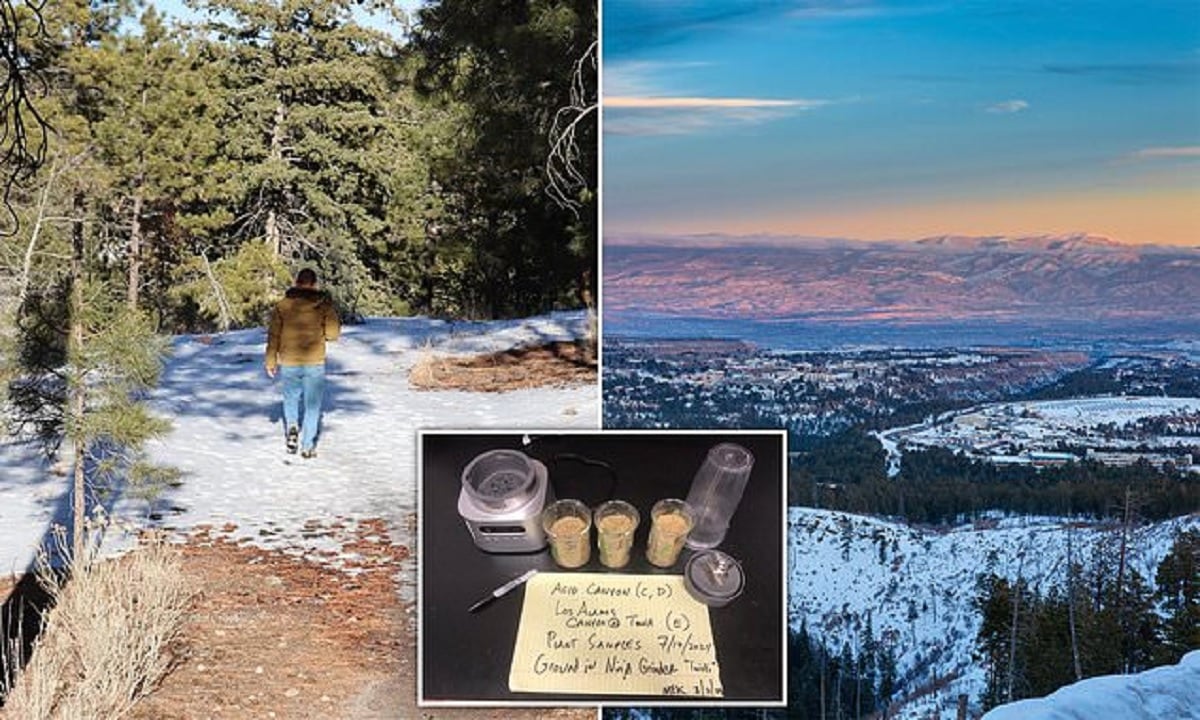Acid Canyon’s radioactive threat rivals Chernobyl
Radioactive waste dumped in Acid Canyon for 21 years

In the US, there’s a park where residents can wander freely, yet parts of it are reportedly as radioactive as Chernobyl. Unlike the heavily guarded Area 51, there’s a location that poses a serious threat to life in a completely different way.
Interestingly, there’s no connection between these places. It’s peculiar how a spot as radioactive as Chernobyl has no restrictions, while another area in the desert remains off-limits.
Acid Canyon in New Mexico is a well-known hiking trail near Los Alamos, the birthplace of the atomic bomb. Reportedly, for over 20 years, the US Government dumped radioactive waste into Acid Canyon.
Popular US park as radioactive as Chernobyl, says expert: 'I've never seen anything quite like it'
"A scenic hiking trail has been discovered to be dangerously contaminated with radiation.
New tests have discovered that Acid Canyon — a popular hiking and biking trail near the… pic.twitter.com/CDR9fLlbfi
— judy morris (@judymorris3) August 28, 2024
The US Department of Energy stated that between 1943 and 1964, Los Alamos National Laboratory’s nuclear weapons research activities generated liquid effluent wastes. By 1951, a treatment plant was built on Acid Canyon’s south rim to remove plutonium and other radionuclides from the waste streams.
They noted that treated and untreated wastes were discharged from the main acid sewer line, ending at Acid Canyon’s south fork. In 1953, a new plutonium research lab complex started sending additional radioactive liquid wastes to the treatment plant. If treatment wasn’t required to meet release criteria at the time, raw waste was directly discharged into Acid Canyon.
In 1958, a new radiochemistry facility began adding its liquid wastes to the treatment plant’s load. Finally, in 1963, wastes were redirected to a new central waste treatment plant, and the last releases to Acid Canyon were in June 1964. This resulted in 21 years of toxic waste contaminating the land.
In July, biochemist Michael Ketterer from Northern Arizona University collected data. Speaking about his findings, he remarked, “I’ve never seen anything like it in the US. This is an unrestricted area. It’s an extreme example of very high plutonium concentrations in soils and sediments.”
He highlighted that radioactive plutonium has seeped into groundwater, which plants absorb, and can then be ingested by grazing animals or spread through the air due to increasing wildfires from climate change. “This is one of the most shocking discoveries I’ve ever encountered,” he added.
What Other Media Are Saying
- Livescience provides an overview of the Chernobyl Exclusion Zone, highlighting its radioactive nature and the thriving wildlife that has adapted to the area’s abandonment.(read more)
Frequently Asked Questions
Here are some common questions asked about this news
Where is the radioactive park in the US?
Acid Canyon in New Mexico.
What makes Acid Canyon so dangerous?
It has high concentrations of radioactive plutonium in soils and sediments.
How long was radioactive waste dumped in Acid Canyon?
From 1943 to 1964, a total of 21 years.
Who conducted recent research on Acid Canyon’s radioactivity?
Biochemist Michael Ketterer from Northern Arizona University.
Why is the contamination in Acid Canyon particularly concerning now?
The radioactive material can leak into groundwater, be absorbed by plants, and spread through wildfires.







